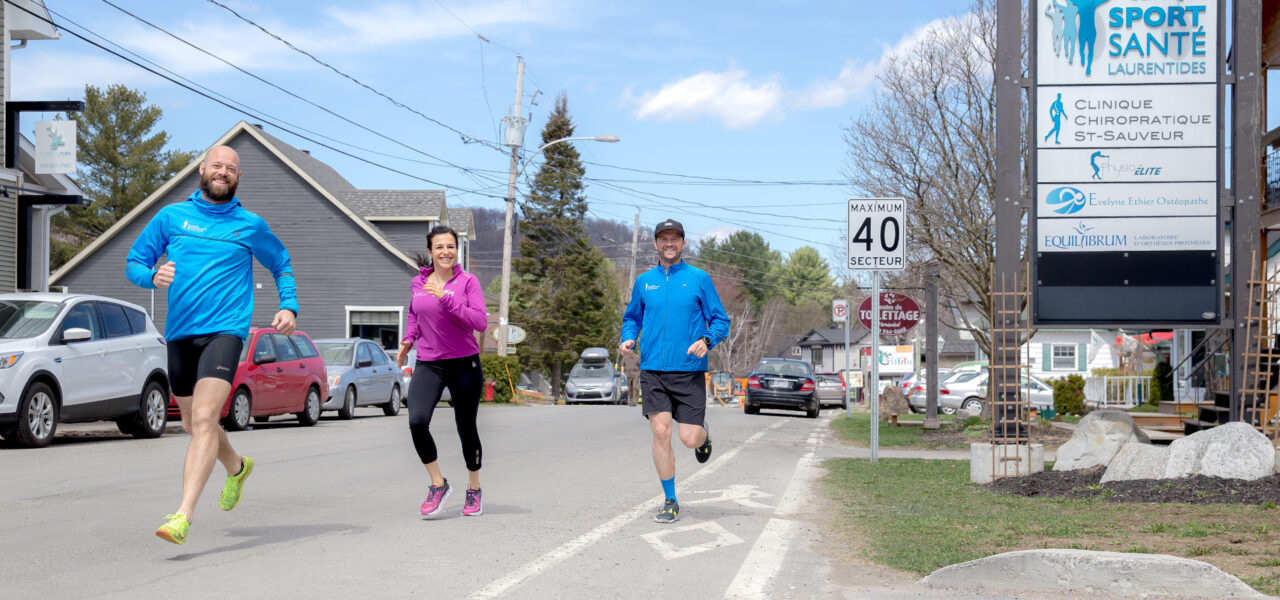Running is an excellent sport for your health. It’s easy to do, requires little equipment, therefore making it inexpensive. However, this sport has a bad reputation since several runners get injured while running. In fact, between 50% and 60% get injured. This is why it’s so important to know the risk factors and ways you can protect yourself against injuries.
The human body has adapted to a vertical position over thousands of years. Not only allowing us to use our hands while running but also to cover long distances while conserving more energy. We aren’t necessarily designed to be fast runners, but rather long distance runners.
The lengthening of the Achilles tendon, the shape of the arch of our foot, the development of our buttocks, the extensive mobility of our spine, the stable yet versatile design of our hips, the mechanisms that help keep us cool such as sweating and the little hairs on our bodies, are but a few of the ways we’ve adapted almost perfectly to running.
It’s important to know the different risk factors associated with running injuries:
- An existing back or leg injury: this is the main reason for running injuries. A history of previous trauma in one of these areas makes you more susceptible to injury.
- Being a new runner: New runners tend to set up running goals that are too ambitious for their abilities and their current fitness levels. Running is an impact sport; the body will adapt to this repeated activity if we progress gradually in our training, interspersed with appropriate periods of rest.
- Running too many kilometers: more than 65km a week greatly increases the risk of injury.
- Being competitive: trying to run too often or running too fast can lead to repetitive trauma to different tissues and cause injury.
Certain other factors might seem like risk factors but are not. For example, weight, age, sex and running terrain don’t statistically increase the risk of injury. So, no excuses that you are too old or too heavy to run!
How to avoid developing pain while running?
Here are a few tips
Relaxed posture
Relax your shoulders, avoid forcing with your arms and lean your body slightly forward. In order to minimize knee, hip and lower back impacts, place the foot under the body with a “mid-foot” or “forefoot” approach. If you’re currently running on your heels, gradually make the change to the forefoot, as this will stimulate the muscles of the foot and calf even more!
3 Proven basic rules
In order to reduce the force of impact and the duration of ground contact, and to minimize muscular effort and to improve body stability do the following:
- Run at a rate (cadence) of 180 steps / min (there are now many smart phone applications and fitness watches that help people track their running cadence);
- Do a light run (start with a brisk walk, alternating with short periods of jogging as you gradually improve your cardiovascular capacity and your tolerance to the impact forces of running);
- Adjust your running technique gradually to make contact with the ground with the middle or front of your foot, instead of your heels. This will promote a faster ground contact time, reduce the ‘braking’ impacts going up from your foot as high up as your low back, and also strengthen your foot and Achilles tendon and calve region to support more efficient running!
Besides our running routine, other aspects specific to each person may predispose us to injury. Inadequate footwear, wearing a poorly fitting foot orthosis, muscle weakness or the presence of a current injury are some examples.
Regardless of the changes one makes to their running pattern (cadence, shoes, foot position, etc.), it’s essential to advance gradually and let your body adapt to these changes!

